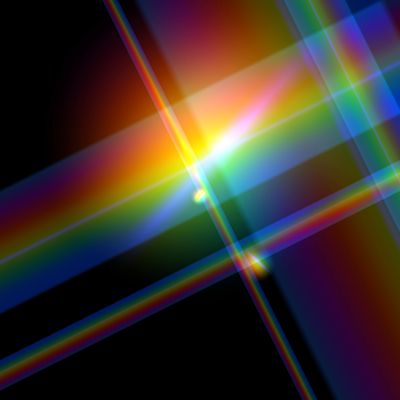A magazine where the digital world meets the real world.
On the web
- Home
- Browse by date
- Browse by topic
- Enter the maze
- Follow our blog
- Follow us on Twitter
- Resources for teachers
- Subscribe
In print
What is cs4fn?
- About us
- Contact us
- Partners
- Privacy and cookies
- Copyright and contributions
- Links to other fun sites
- Complete our questionnaire, give us feedback
Search:
Engineering a cloak of invisibility
You pull a cloak around you and disappear! Reality or science fiction? Even in Harry Potter's world it takes powerful magic and complicated spells to make it work. In fact Harry's Cloak of Invisibility is one of the three 'Deathly Hallows' rumoured to have been created by Death himself. The other two are the Resurrection Stone - the secret of bringing people back to life - and the Elder Wand - the most powerful wand ever created. Strong stuff!

Could an invisibility cloak ever be a reality? It sounds impossible especially if you understand how light behaves. It bounces off the things around us, travelling in straight lines. You see them when that reflected light eventually reaches your eyes. I can see the red toy over there because red light bounced from it to me. For it to be invisible, no light from it must reach my eyes, while at the same time light from everything else around should. How could that be possible? Akram Alomainy of Queen Mary, University of London, tells us more.
Well maybe things aren't quite that simple...halls of mirrors, rainbows, polar bears and desert mirages all suggest some odd things can happen with light! They show that manipulating light is possible and that we may even be able to bend it in a way that alters the way things look - even humans.
Light fantastic
Have you ever wondered how the hall of mirrors in a fun fair distorts your reflection? Some make us look short and fat while others make us tall and slim! It's all about controlling the behaviour of light. The light rays still travel in straight lines, but the mirrors deceive the eye. The light seems to arrive from a different place to reality because the mirrors are curved, not flat, making the light bounce at odd angles.
A rainbow is an object we see that isn't really there. They occur because white light doesn't actually exist. It is just coloured light all mixed up. When it hits a surface it separates back into individual colours. The colour of an object you see depends on which colours pass through or get reflected, and which get absorbed. The light is white when it hits the raindrops, but then comes out as the whole spectrum of colours. They head off at slightly different angles, which is why they appear in the different rainbow positions.
What about polar bears? Did you know that they have black skins and semi-transparent hair? You see them as white because of the way the hollow hairs reflect sunlight.
So what does this have to do with invisibility? Well, it suggests that with light all is not as it seems. Perhaps we can manipulate it to do anything we want.
Water! Water!
Now for the clincher - mirages! They show that invisibility cloaks ought to be a possibility. Light from the sun travels in a straight line through the sky. That means we see everything as it is. Except not quite. In places like deserts where the temperature is very high at noon, apparently weird things happen to the light. The difference between the temperature, and thus the difference in density between the higher air layers and the levels closer to the ground can be quite large. That temperature difference makes light coming from the sky change direction as it passes through each layer. It bends rather than just travelling in a straight line to us. It is that image of the sky that looks like the pool of water - the mirage. Our brains assume the light travelled in a straight line, so they misinterpret its location. Now, to make something invisible we just need to make light bend round it. That invisibility cloak is a possibility if we can just engineer what mirages do - bend light!
Nano-machines

That is the basic idea and it is an area of science called 'transformation optics' that makes it possible. The science tells us about the properties that each point of an object must have to make light waves travel in any particular way we wish through it. To make it happen engineers must then create special materials with those properties. These materials are known as metamaterials. Their properties are controlled using electromagnetism, which is where the electronic engineers come in! You can think of them as being made of vast numbers of tiny electrical machines built into big human-scale structures. Each tiny machine is able to control how light passes through it, even bending light in a way no natural material could. If the machines are small enough - 'nanotechnology' as small as the wavelength of light - and their properties can be controlled really precisely to match the science's prediction, then we can make light passing through them do anything we want. For invisibility, the aim is to control those properties so the light bends as it passes through a metamaterial cloak. If the light comes out the other side of the cloak unchanged and travelling in the same direction as it entered, while avoiding objects in the middle, then those objects will be invisible.
Now you see it...
Simple cloaking devices that work this way have already been created but they are still very limited. One of the major challenges is the range of light they can work with. At the moment it's possible to make a cloak that bends a single colour frequency, but not all light. As Yang Hao, a professor working in this area at Queen Mary, notes: "The obstacle engineers face is the complex manufacturing techniques needed to build devices that can bend light across the whole visible light spectrum. However, with the progress being made in nanotechnologies this could become a possibility in the near future".
Perhaps we should leave the last word to J.K. Rowling: "A suspicious object like that, it was clearly full of Dark Magic." So while we should appreciate the significance of such an invention we should perhaps be careful about the negative consequences!


